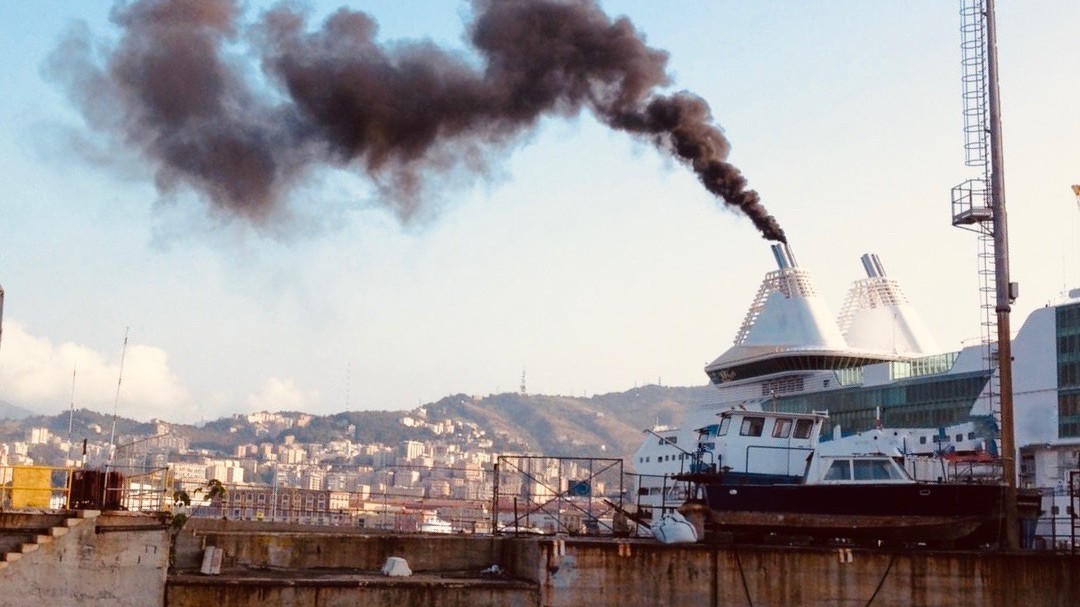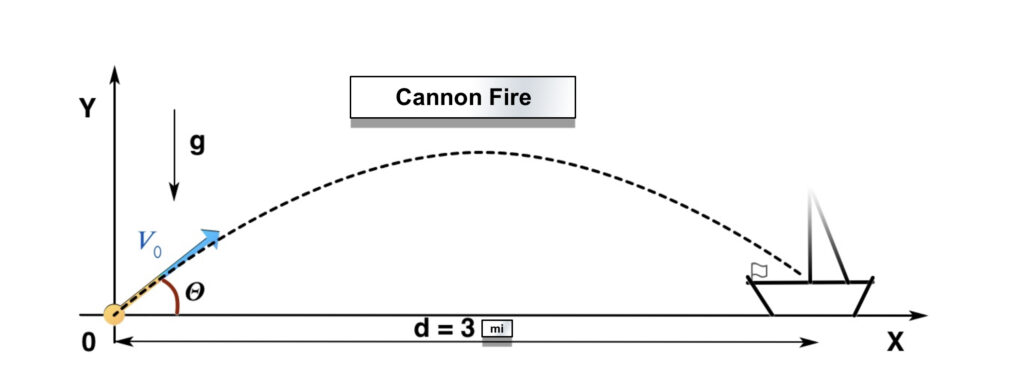
Naval Pollution | Natural | Voluntary | Accidental
Naval pollution has been a topical issue – for many years.
It is a problem that cyclically comes back into vogue and often throws our failures in our faces, together with the insufficient efforts we make to solve them.
From the smallest craft to the largest cruise ship, passing through the endless array of commercial cargo vessels and tankers, the ships weave networks of polluting trails at sea. And this is in addition to those created by cars, trucks and trains, planes, drones, rockets and satellites. On the ground and in the air, from the troposphere to the highest layers of the stratosphere. *
* We remind you that the TROPOSPHERE is the gaseous spheroidal belt of the atmosphere that is in direct contact with the earth’s surface, of variable thickness depending on the latitude: at the poles, it is only 8 km thick while it reaches 16-20 km at the equator. In other words, it is the atmosphere belt where meteorological phenomena occur. The STRATOSPHERE begins around 12 km and ends at about 50 km altitude, where the temperature reaches a maximum of minus 3 degrees Celsius.
These pollution phenomena are exponentially growing following demographic trends and general development.
Since 1967 the UN has been dealing with problems relating to the “rights and responsibilities of States” regarding the use of seas and oceans.
Its commitment has given rise to the UNCLOS (United Nations Convention on the Law Of the Sea ), also known as the “Montego Bay Convention”, which indicates the guidelines on measuring inland and international waters, establishing the latter: property of all. The Convention also sets the rules on the use of the seas: their jurisdiction, the exploitation of resources, extractions of all kinds, scientific research, and the much-felt theme of environmental protection today.
 (It is worth remembering that before UNCLOS, the “cannon firing” rule was in force, according to which states had national rights for three nautical miles from the coastline, that is, the range of the guns beyond which defensive weapons were no longer viable. Over that limit, the waters became International, but according to the principle of free access and property of no one).
(It is worth remembering that before UNCLOS, the “cannon firing” rule was in force, according to which states had national rights for three nautical miles from the coastline, that is, the range of the guns beyond which defensive weapons were no longer viable. Over that limit, the waters became International, but according to the principle of free access and property of no one).
Today the UN denounces that a quarter of premature deaths and diseases worldwide links to pollution and environmental damage caused by man. It also demonstrates that a large share of the responsibility lies with ship pollution.
In 2012 the WHO (World Health Organization) classified the gases emitted by diesel engines as carcinogenic, comparing them to asbestos on the scale of danger.
Ships can pollute in three different ways: natural, voluntary or accidental.
Those issues are very complicated to regulate. For some aspects, technology helps us to improve; for others, on the other hand, the ever-growing number of ships and new technological solutions often force us into long and fruitless chases.
By its nature, a ship pollutes with the following “pollutions”:
- – Emissions of carbon dioxide, nitrogen and sulfur from diesel engines – which increase the particulate in the air, increasing the greenhouse effect and global warming, which, in cascade, cause disastrous weather phenomena including droughts, floods and violent storms. All this contributes to the ‘rising of the sea water level due to the subsequent ice melting. The particulate – which we know to be carcinogenic – may cause respiratory and neurotoxic disorders and, in its subtle forms, can even lead to DNA mutations.
- – Loading and unloading of ballast water – which cause changes in the ecosystem, otherwise impossible, transporting foreign animal, plant, bacteria and virus organisms to places where they often replace native species.
- – Acoustic emissions – in Port through the large current generators necessary for the maintenance of on-board services, but above all at sea where, due to the ease of sound transmission through liquids, they disturb and damage the lives of many marine species that use the sounds for orientation or hunting.
- – Spillages of sewage – those liquids derived from drains from laundries, showers, bathrooms and everything related to cleaning naval environments. When properly untreated, wastewater can contain oils, fats, hydrocarbons, metals and plastics, or even bacteria and viruses, contaminating fish and shellfish that enter our food chain.
Ships and their crews can also pollute “voluntarily”.
There have been many legally prosecutable cases of voluntary pollution in post-war naval history. Hopefully, fewer and fewer will occur as efforts to counter them have grown dramatically.
. We can group like this:
- – Solid waste pollution – Biodegradable or not. Paper, plastic and metal. Large ships often use separate collections, disposing of them in coastal centres. Many ships have dedicated incinerators. But it has often happened that part of this waste has been poured into the sea, polluting and creating significant obstacles to the safety of navigation. Fortunately, the increasingly tight technological prevention and controls of the Coast Guard in the most efficient states have produced excellent results for years to stem this problem. The FLIR we are talking about in this article is just one of the latest tools to support active surveillance.
- – Pollution from bilge oils – The problem is partially solved by the installation of separators for the treatment of the bilge water, hydrocarbons recovered, and water discharged into the sea once the minimum percentage required by the law of 15 ppm.
- – Pollution from washing oil cargo tanks – Whose illegal practice is difficult to detect and legally prosecute.
Finally, we note the significant problem linked to accidental pollution, therefore, due to accidents of various kinds that frequently occur at sea.
Ships can collide, run aground, catch fire and then sink:
Such events usually go down in history for human losses, and the damage suffered at all levels by the kilometric-polluted coasts—of entire nations.
Leaving aside the theme of oil platforms, which boast a dismal record in environmental disasters in terms of proportions, at the top of the list of the most dangerous ships, we find the sector of oil tankers, which, due to the nature of their cargo, are a real danger to the environment. In this regard, remember that crude oil kills in two stages. The first is creating an oxygen-impermeable film that exterminates the fauna on the surface and the plankton below. In the second, when the light component evaporates, and the heavy one plunges towards the bottom, it kills all the organisms that live there. It takes many years to clean up such pollution, and the data tells us that millions of tons of crude oil are poured into the sea in various ways—every year.
But these tragic events can also result in chemical or radioactive pollution.
What are the defences?
The IMO is the UN agency specializing in the maritime field, which is committed, among other things, to prevent, monitor, controlling and reduce marine and air pollution.
The MARPOL Convention, since 1973 and with its amendments, offers us a valuable guide to safeguarding the environment from marine pollution. Double hull, segregated ballast, Crude Oil Washing, inert gas, collection and sedimentation boxes, staff training, waste collection, incinerators, separators, coastal and offshore booms or absorbents, skimming machines, prevention rules, regulations and prohibitions are known and always current solutions.
But many other conventions are due to the IMO, among the latest: the International Convention for the Control and Management of Ships’ Ballast Water and Sediments of 2004 and The Hong Kong International Convention for the Safe and Environmentally Sound Recycling of Ships of 2009.
Over the years, the European Parliament has issued provisions and regulations for the Member States aimed at intensifying PSC (Port State Control) controls and monitoring by the coastal authorities through the AIS system’s mandatory nature.
The EMSA (European Maritime Safety Agency), founded in 2002, provides technical advice and operational assistance to improve the protection of the seas, the preparation and intervention in the event of pollution and maritime safety. In 2007, it created CleanSeaNet, a satellite surveillance system for detecting the oil slick, supporting local authorities in identifying and prosecuting those responsible for voluntary offshore pollution.
The initiatives multiply yearly, and many try to do their part.
In 2013, certifications of compliance with new energy efficiency standards became mandatory. Incentives for greener ships are in place in several ports worldwide: reduced Port fees or priority berths for eco-friendly vessels. The Thames Pilots will soon test the first hybrid pilot boat. This pilot boat can guarantee 6 hours of electric autonomy at 10 knots. It can rely on diesel engines for higher speeds, thus operating 90% in ecological mode.
Many companies are investing in the electrification of future naval units. Recent news, for example, is that the Grimaldi company purchased six new diesel-electric hybrid Ro/Ro, which would solve, at least during stops in Port, the emission of pollutants, using lithium batteries recharged in navigation by traditional engines. Less polluting than the current ones. All the major shipping companies are moving on the same front. We have also talked about remotely operated electric ships in this article: link.
Today, world public opinion is susceptible to these issues because the pessimistic and sometimes catastrophic forecasts of a few decades ago are regularly becoming true.
Efforts multiply, but the solutions always seem too distant.
The climate and air pollution convention 2020 has already set new frontiers. By then, some polluting emissions will have to be drastically reduced, and the actors are already on the move.
The UN 2022 document, which describes the 10 EVENTS TO LOOK OUT FOR IN THE NEW YEAR, is fascinating.
These are not easy challenges, but fighting against pollution at all levels is necessary—land, air and sea, industries and individuals.
Because as the great Italian prince De Curtis aka Totò, said: “.. it is the sum that makes the total! “

